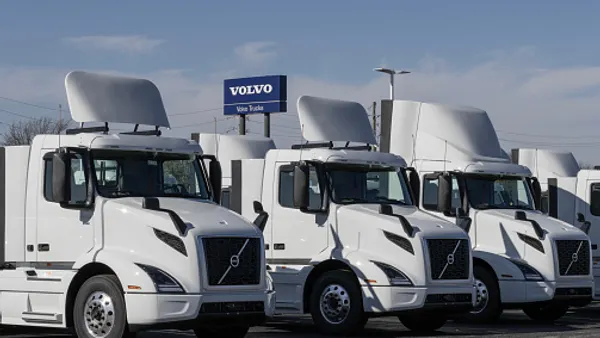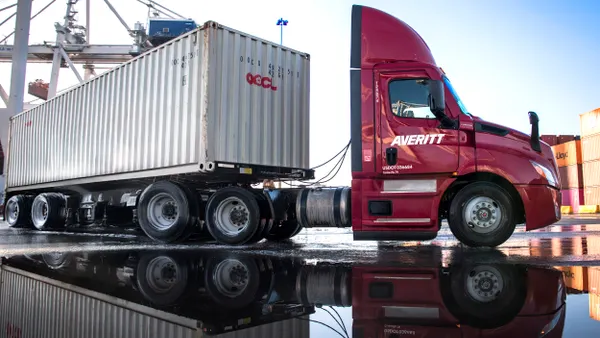The LTL freight rate market is on the cusp of expansion. E-commerce, the capacity crunch, the driver shortage, general rate increases, fuel costs, trade war fears, and other factors will drive the LTL market further toward success, but also upheaval thru these disruptive fronts, in the coming year. Meanwhile, inbound LTL freight costs are accelerating in advance of the peak shipping season, reports Freight Waves, creating a perfect brew for higher rates overall in the LTL marketplace in the coming year. Shippers need to know what to expect to plan budgets accordingly and get overall shipping costs optimized.
What’s the biggest issue with a higher LTL freight rate outlook?
The biggest problem with the LTL freight rate outlook goes back to a basic business principle, competition. Unlike FT trucking, the LTL market is more disproportionate, asserts Auptix.com. The top 25 LTL providers in the market own and operate 90 percent of all LTL freight. The remaining 10 percent is in the hands of hundreds of smaller, regional or local carriers. As a result, the ability to get a better deal by just shopping around may not be as noticeable as when selecting an FT carrier. Another factor affecting the likelihood of freight rate changes in LTL lies in the difference in rates over the last year. FT rates changed approximately 11.2 percent, reports Logistics Management, but LTL rates grew 7.5 percent. Although FT rates are higher, Full Truckload capacity has approached a breaking point. LTL capacity has room to spare right now, and this will play a role in how LTL responds with rates.
As FT carriers continue to operate within tight capacity, more freight will be turned away. The next logical place for FT freight will be to split it into LTL or sending freight that would have been initially marked as FT via LTL in the first place. As more shippers move away from FT, LTL demand will rise sharply. In turn, rates will increase much faster than anticipated. So, what makes LTL superior, and why exactly does LTL have extra capacity? Also, how does LTL manage to keep drivers in the industry? To answer those questions, we need to take a look at the advantages of LTL carriers over FT carriers.
Why LTL has a better future for rates than full truckload
LTL carriers also have another advantage over FT, reports Trucking Info. They can hire younger workers for entry-level positions, like material handlers, packagers and office workers. As they move up in the company, younger workers gain additional skills in moving LTL freight, and the hope is that eventually, they become line-haul drivers. For FT carriers, the ability to move within the company is stifled. As a result, they may be incapable of attracting talent that does not necessarily already have a CDL. Of course, office staff and handlers will still be necessary, but position availability for lower-rung, entry-level positions will be more prevalent in LTL carriers, making them more attractive to the next generation.
Key trends to watch for that will preclude LTL rate changes in 2019
Recognizing the trends in the industry for LTL freight rate outlook increases can be a way shippers can judge how much time is left before the shipment hits the proverbial fan. Some of the warning signs of future LTL rate hikes include:
-
The capacity crunch results in severe cuts to freight accepted by the major carriers, like increasing minimum shipments to 15,000 pounds or more before being marked as FT.
-
Higher driver turnover continues unchecked, which is already occurring.
-
Increased demand in e-commerce continues after the holiday shopping season.
-
General rate increases by the Big Three carriers in January.
-
Sharp rises in fuel costs or decreased fuel production domestically and abroad.
-
Passage of autonomous trucking legislation, regardless of whether it limits or expands the ability of companies to test self-driving trucks.
-
Assessment of retaliatory tariffs by other countries, namely China.
-
The ongoing reduction in the Dow Jones Industrial Average.
-
The announcement of new services and cost reductions for shipping and shopping with Amazon or Walmart.
The 2019 LTL freight rate outlook will be subject to change
The future of the LTL freight rate outlook will be written once the peak shipping season ends. This will be when carriers have an opportunity to re-evaluate freight rates, particularly the Big Three carriers, which will set a new standard for freight rates in 2019. Of course, the volatility in demand and resurgence of LTL through e-commerce will further push LTL rates higher. If economic growth continues, the next year could easily see freight rates increase by double-digits, if not more. The only way to know where you stand is to get a leg up in working with carriers now to negotiate LTL freight rates or use third-party resources, like the Cerasis Rater, to tap into the value of all LTL carriers, including the final 10 percent of the market through smaller carriers and fleet owners









